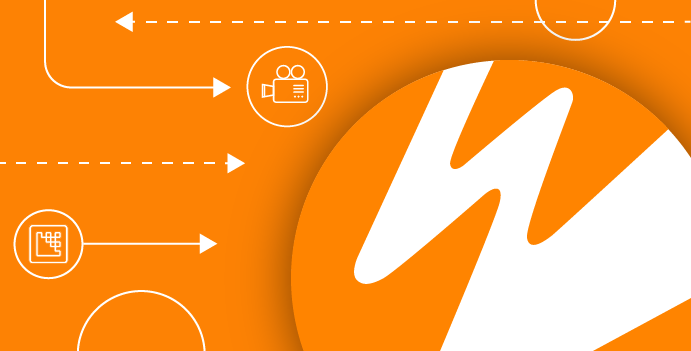What Is Content Security and Why Do You Need It?
In a nutshell, content security refers to any methods you employ to protect access to and distribution of your content. This could be as basic as user login credentials for your OTT streaming platform or as complex as an integrated Digital Rights Management (DRM) System. Whether simply restricting access to content or fully encrypting the content files, you should consider how best to protect your video content according to its intended uses and target audience.
But do you really need video content security?
Anyone who is making money off their video content understands that unauthorized access to and distribution of that content leads to lost revenue. However, there are other reasons why you might want to protect your streams. Your company might want to distribute videos internally that contain confidential information. You might be legally obligated to distribute licensed content in only specific ways or to specific regions. Controlling access to your content can protect you in a variety of ways.
Methods: Restricting Access

Some forms of content security focus on controlling access to the data in question. At its most straight-forward, this looks like login credentials for a streaming site. However, access restrictions can be more nuanced and user-friendly.
Geo-blocking
True to its name, geo-blocking, also called geo-restrictions, refers to limiting viewer access based on geographic region. This can be done in one of two ways: blacklisting specific regions so they can’t access your content or whitelisting specific regions so only they can access your content.
Why would you want to restrict access this way? For starters, you may only be licensed to stream certain content in specific areas. This is often seen in sports streaming but may apply to other industries as well. Geo-blocking is also sometimes used to blacklist regions known for being at a higher risk of piracy.
Signed URLs
Let’s say someone pays to access your stream. In doing so, they receive a URL that takes them directly there (no login required). What’s stopping them from sharing that URL with other users who haven’t paid for the content?
Signed URLs prevent this sort of unauthorized access by giving approved users unique URLs that won’t work upon sharing. These often work by allowing accesses to a single IP address, often through the use of token authorization. They may also be valid for limited time periods. The protection offered here is very similar to having a membership to a website. However, it removes the user’s need to validate credentials.
Note that the above methods do not encrypt the data itself. If the data is unencrypted, then any leaked content can easily be accessed and duplicated. It’s advisable to protect your data files in addition to managing access restrictions.
Methods: Protecting Data

A well-rounded content security approach not only manages access to the data from outside, but also carefully packages the data files themselves. In short, it encrypts the data files. However, data encryption is more complicated and difficult to manage than you might think.
Data Encryption
You can encrypt data using a standard encryption algorithm like Advanced Encryption Standard (AES) 128. This encrypts data files with a private key and provides authorized users with another key for accessing the encrypted content.
However, doing this yourself means you need to manage the process yourself. You need to encrypt the data and make sure the key gets into the right hands. And if you try to simplify this by using only one user key, know that the key can easily be shared. It helps to find a service or solution that can take this off your hands.
DRM
Digital Rights Management (DRM) refers to an integrated solution that manages this process for you. It supplies content providers with an encryption key from the DRM platform while also providing authorized users with a decryption key. In other words, only users accessing the data on the correct device with the correct credentials can view the stream.
Streaming platforms like Amazon Prime Video use DRM software to prevent people from downloading, copying, and sharing purchased videos. While many users view this as an inconvenience, streaming platforms can help mitigate frustrations by clarifying that users aren’t actually purchasing a copy of the content. They are purchasing the ability to access the content in a specific way and, in some cases, using a specific device.
In addition to handling data encryption, DRMs can manage timeouts, expirations, and even the aforementioned geo-blocking. They can also track user analytics for informational purposes, making them truly versatile and handy tools.
Methods: Tracking Unauthorized Usage

Unfortunately, there’s no 100% fail-proof method for protecting your video content. Many users have found workarounds to these restrictions, including VPNs to bypass geo-blocking and special software to remove DRM encryptions on data.
Thankfully, there’s still something you can do to protect your content even in the event it gets leaked or copied. Watermarking is a handy way to lay claim to and track the usage of your content.
When many people think of watermarking, they think of those semi-opaque images overlaying portions of an image. However, watermarking can be visible or invisible (forensic). Forensic watermarking makes content traceable, enabling you to find the source of the leak.
A company can use one or both of these methods, and many do. According to a recent survey by the International Trade Association for Broadcast and Media Technology (IABM), 55% of media streaming businesses use some form of watermarking, 51% of which use forensic watermarking and 33% of which use both.
Data Security Guidelines

When considering what content security method is right for you, think about your target audience and how you want them to be able to use your content. In doing so, ask yourself how your chosen methods may impact the user experience and what exploits your chosen methods leave you vulnerable to. Consider the following:
Limit Impact on User Experience
It’s a balancing game between security and availability. If users are too frustrated trying to access your content, then they may stop coming to you.
Layer Methods for Added Security
A combination of data encryption, access restriction, and forensic watermarking would provide a well-rounded security approach. However, your ideal solution will be whatever combination best serves your goals and audience.
Build Flexibility into Your Solution
A content security solution, like your overall streaming solution, should be flexible on a variety of levels. In other words, it should be scalable to increasing demand, adaptable to expanding technological and commercial trends, and able to adjust to improve the customer experience. The best way to achieve this degree of flexibility is through DRM software. A DRM can integrate with an existing technological framework, providing a more central and seamless ability to manage digital rights.
Getting Started

It’s all well and good that we suggest you implement a well-rounded content security plan. But where do you even start? You could look into the most widely used DRM solutions: Google Widevine, Microsoft Playready, and Apple Fairplay. Or you could seek out a streaming service that provides DRM and will help you build the best solution for your business.
FREE TRIAL
Live stream and Video On Demand for the web, apps, and onto any device. Get started in minutes.
- Stream with WebRTC, HLS and MPEG-DASH
- Fully customizable with REST and Java APIs
- Integrate and embed into your apps




